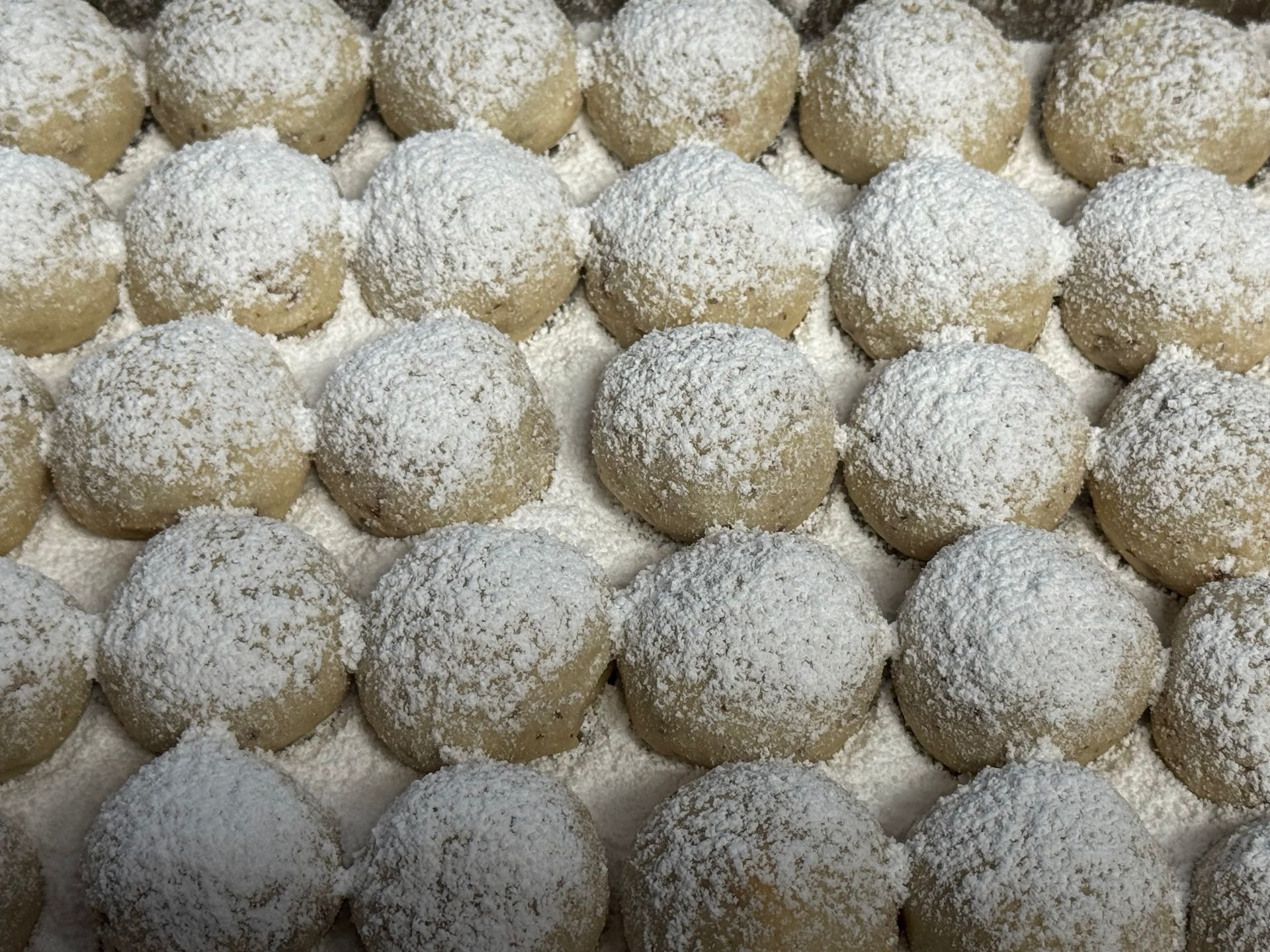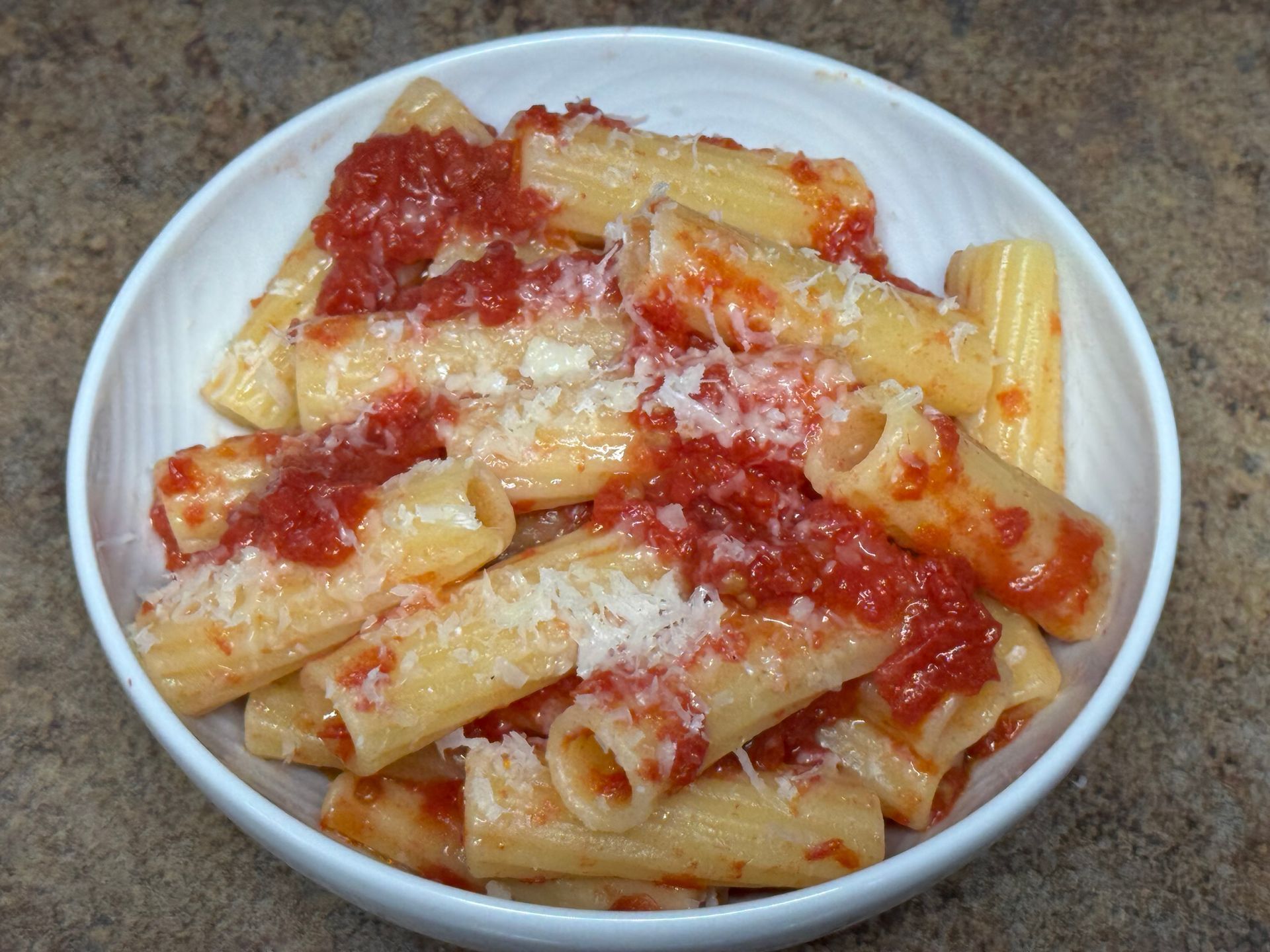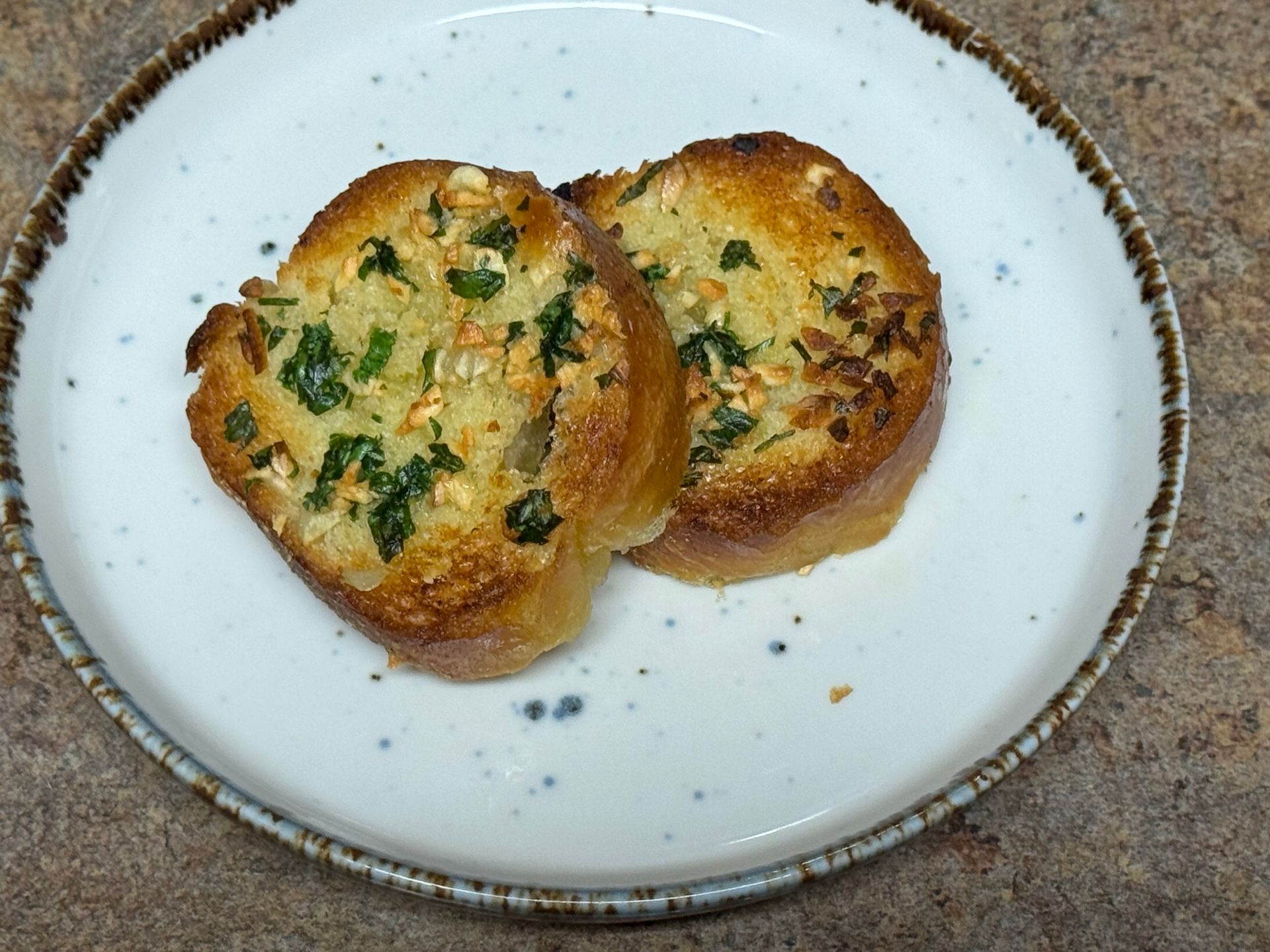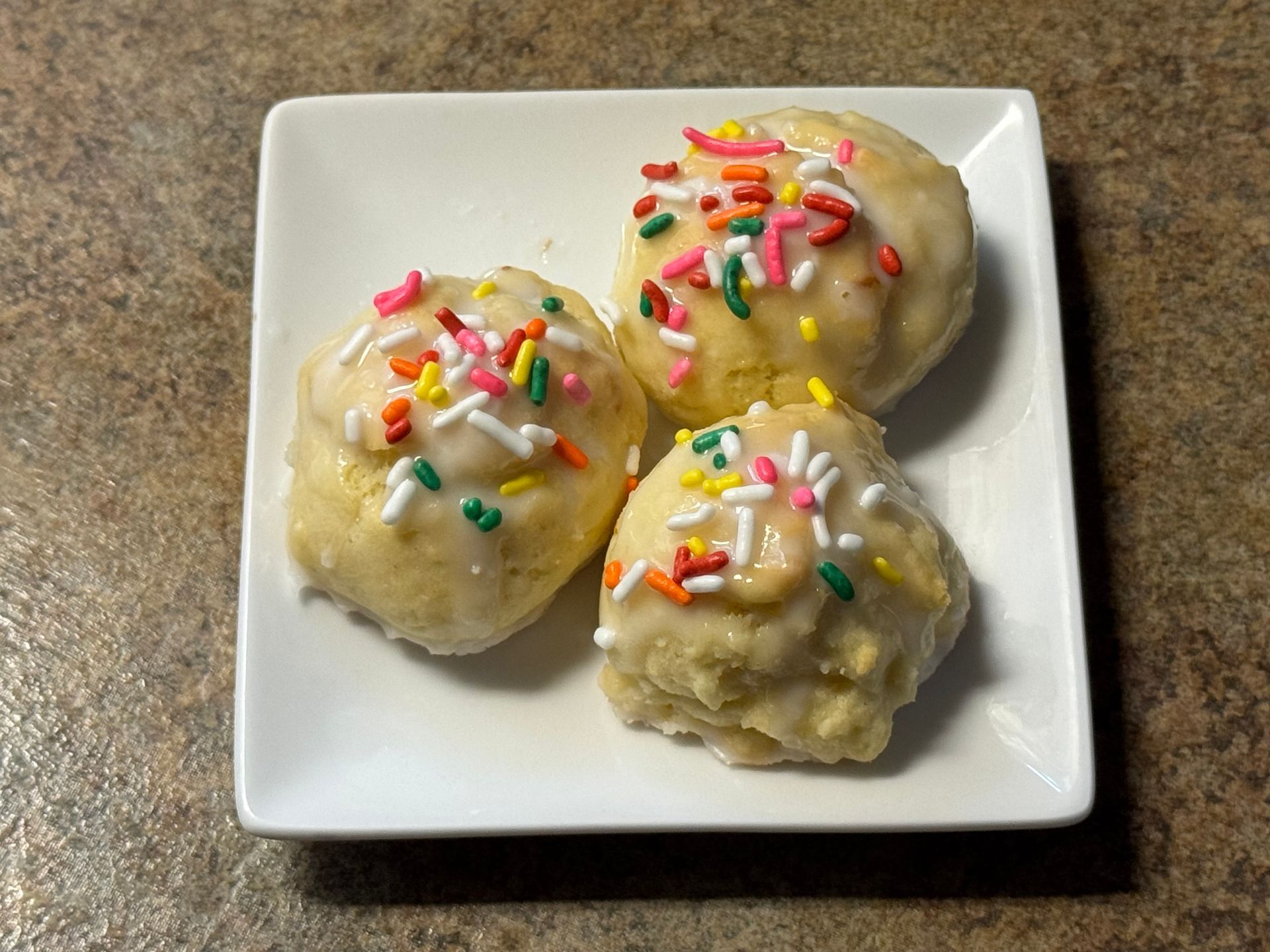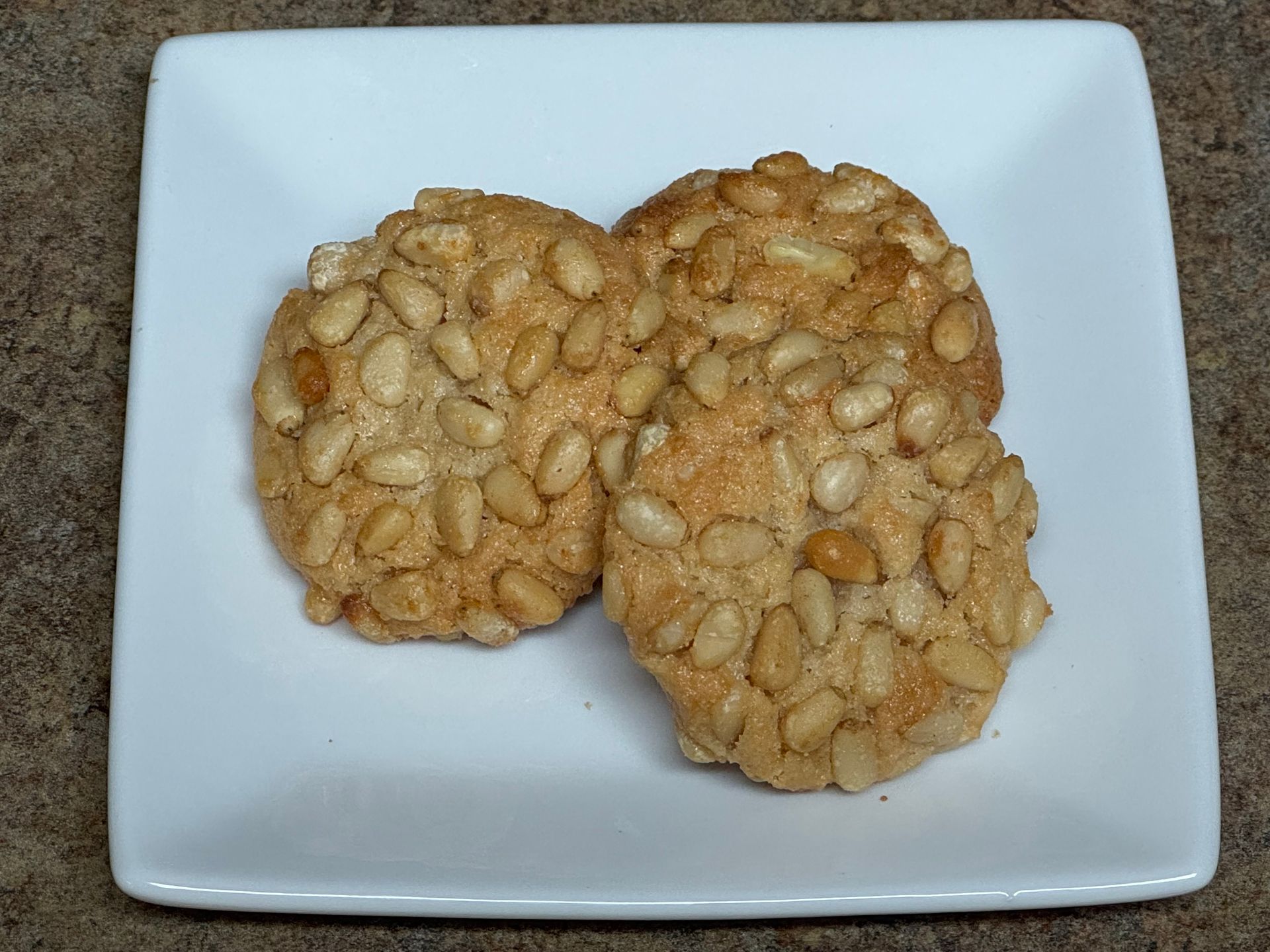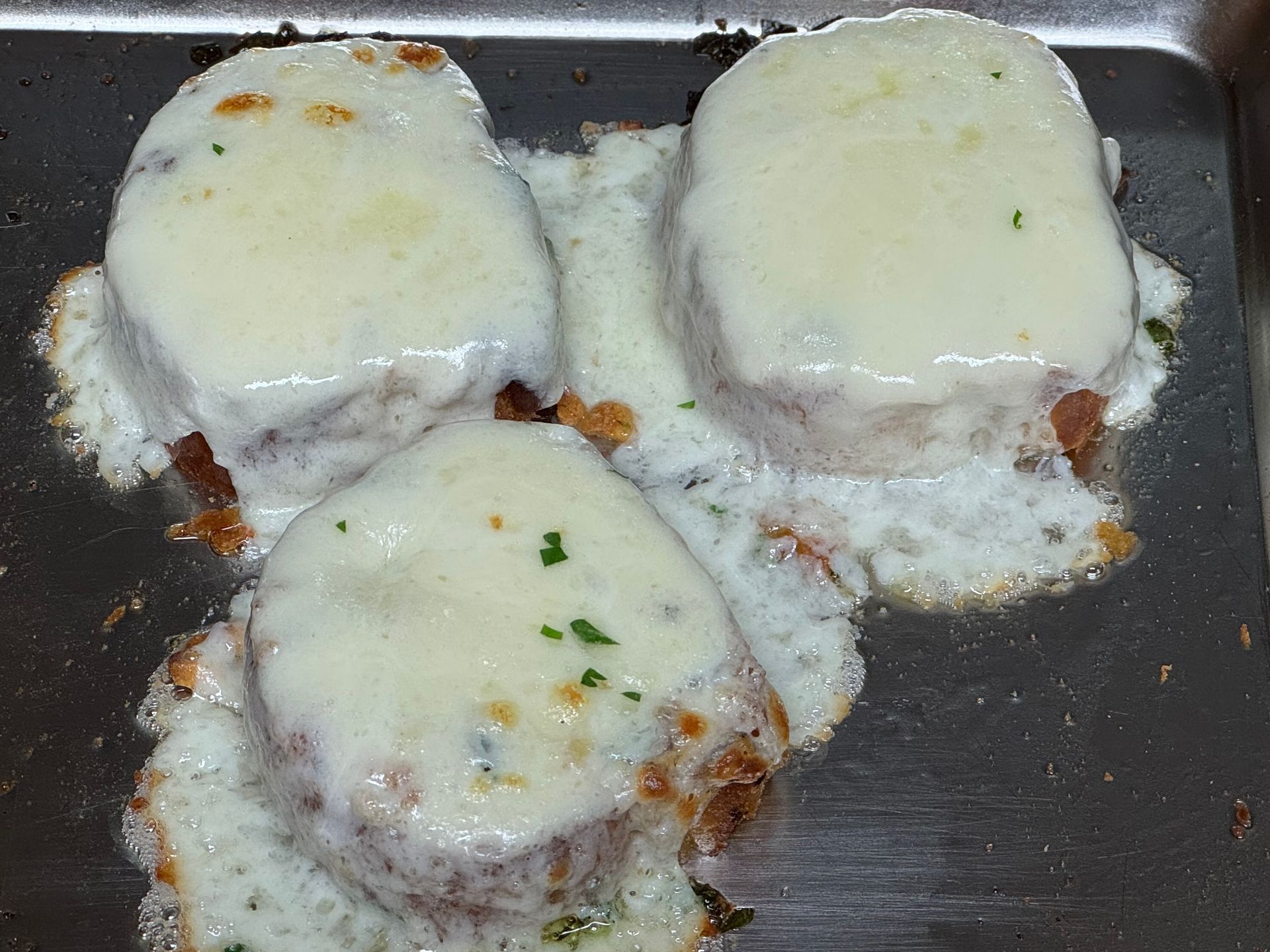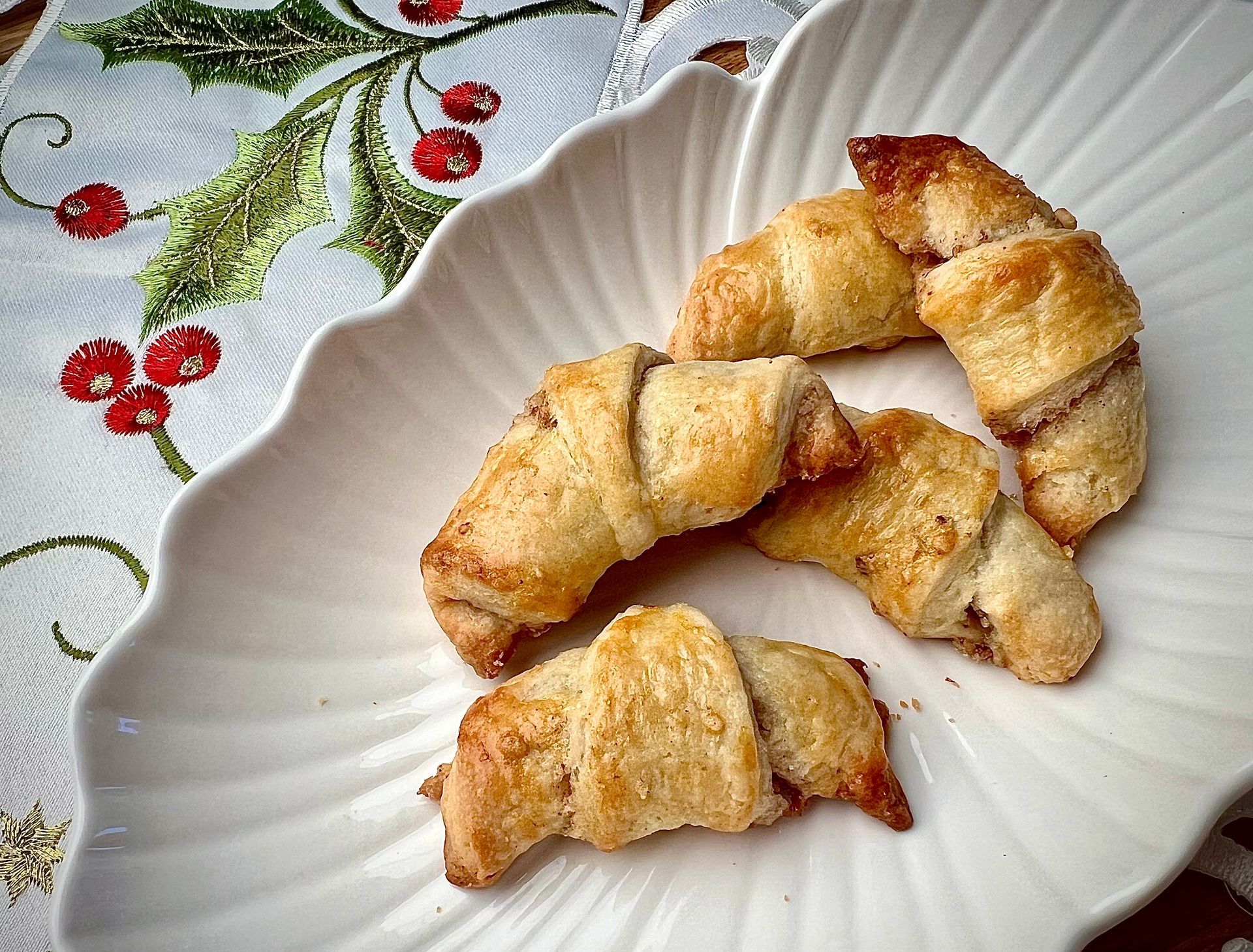
I remember my mother would begin to bake Christmas cookies the day after Thanksgiving. She would fill shoeboxes with tissue paper, then fill the shoeboxes with her assortment of Italian cookies (to fiercely compete with her sisters!). I loved to sneak frozen butterhorns for a snack and she always made plenty!
Butterhorn Cookies
Butterhorn cookies are a timeless holiday classic, rooted in European baking traditions and beloved for their delicate, crescent shape, tender texture and fillings or fruit jam or toasted nuts with sugar.
My family recipe is made with butter, sour cream and egg yolks-lots of yummy fat-so these cookies are tender.
Often finished with a light coating of powdered sugar, butterhorns are understated yet elegant and a staple on any holiday cookie tray.
Making Butterhorn Cookies
Prep Time: 60 min
Cooking Time: 20 min
Yield: 4 portions
Ingredients
1 Cup Butter, room temperature
2 Cups AP Flour, sifted
1 Cup Sour cream
1 ea. Egg yolk
Filling
2 Tbsp. Cinnamon
1 Cup Walnuts, toasted and peeled (in a clean side towel); chopped
1 Cup Sugar
How to Prepare Butterhorn cookies
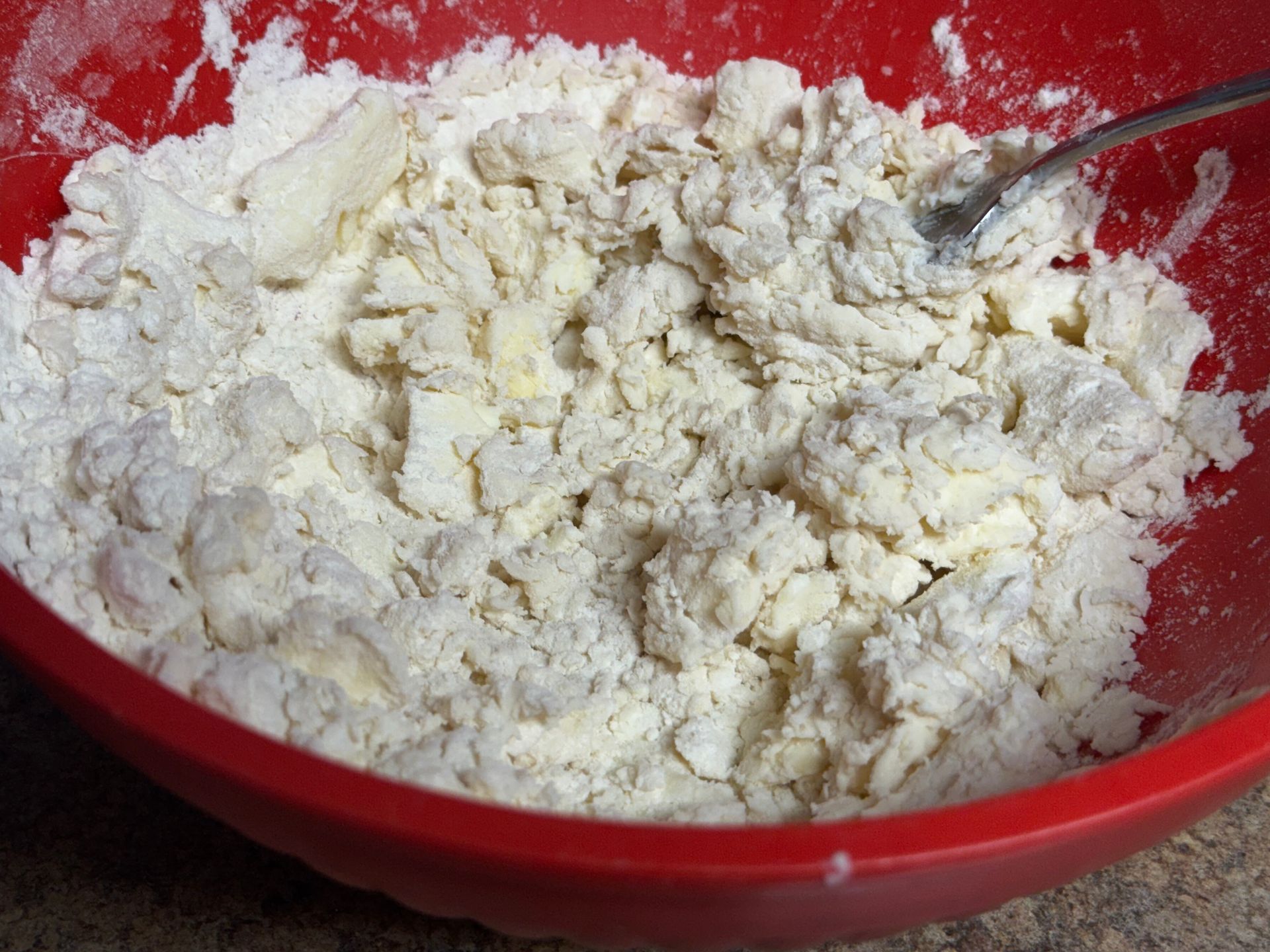
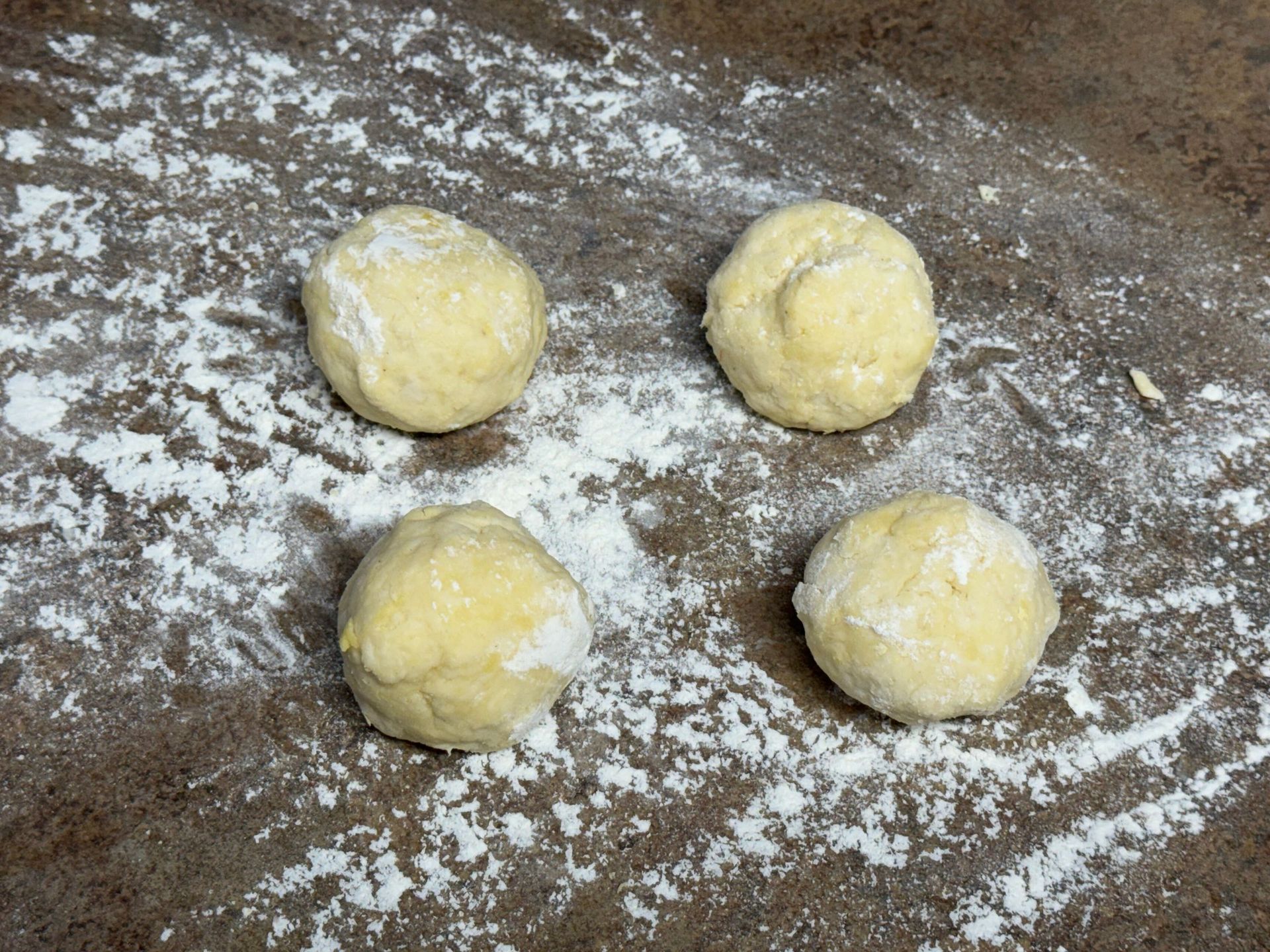

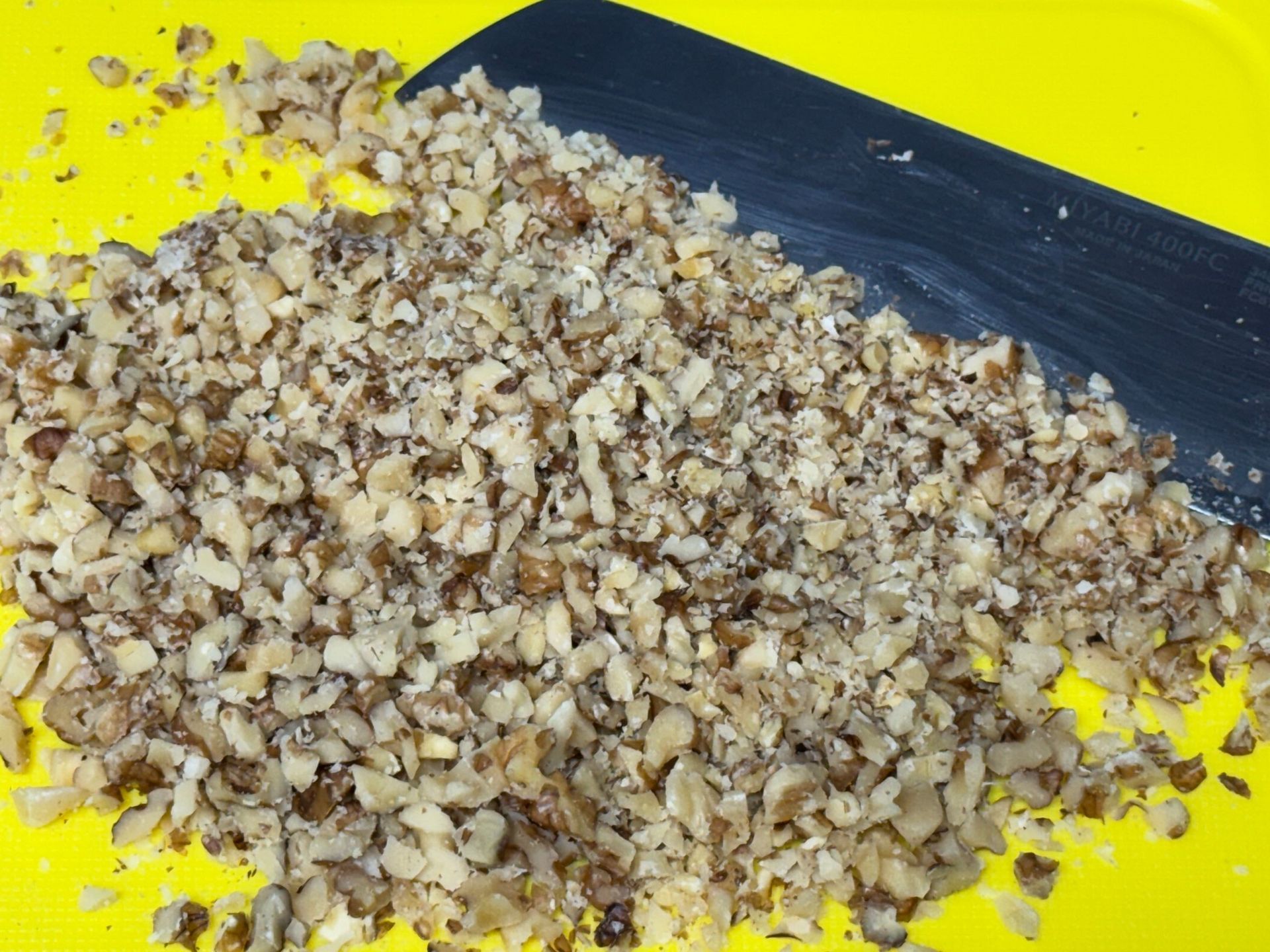

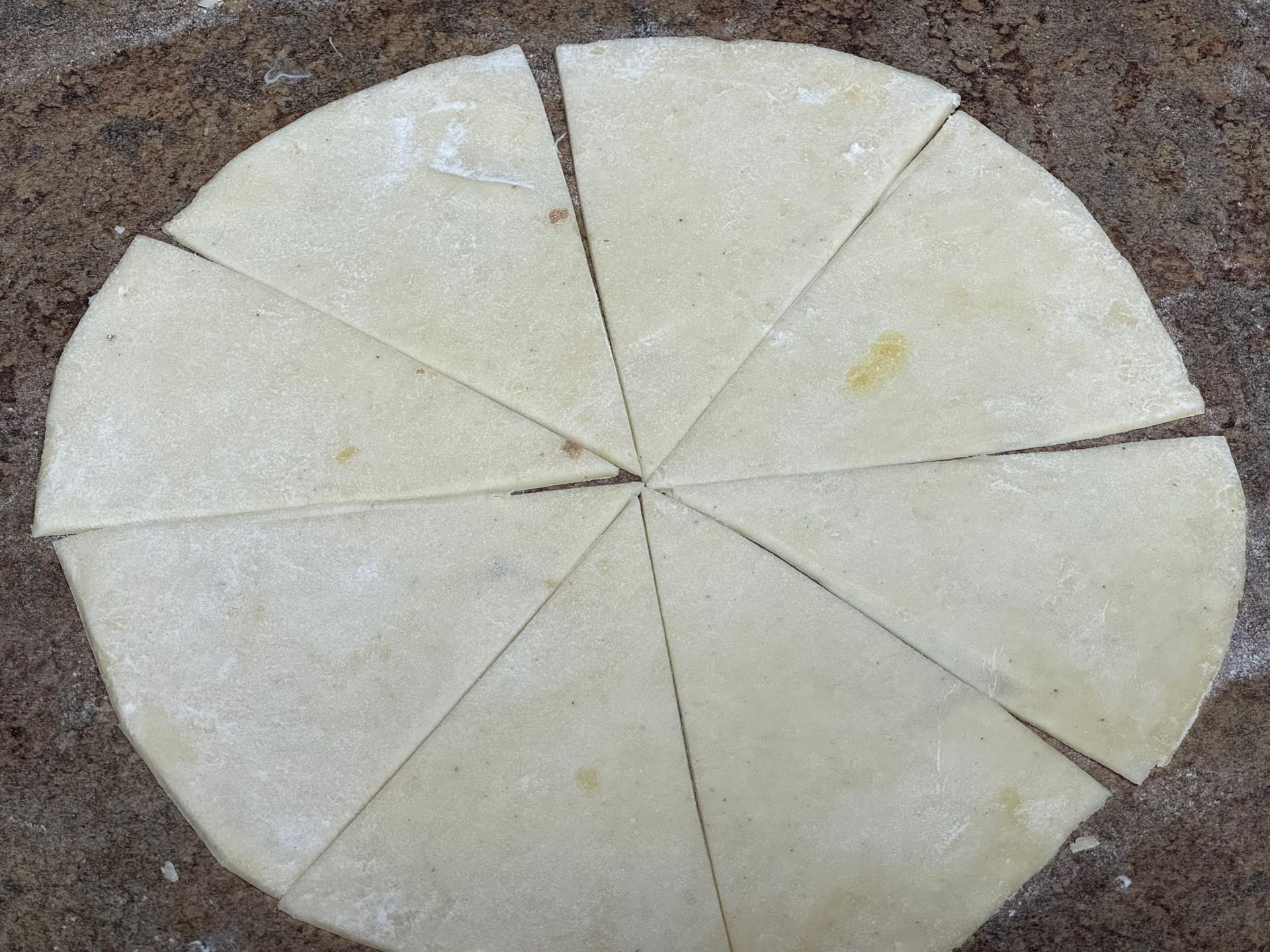
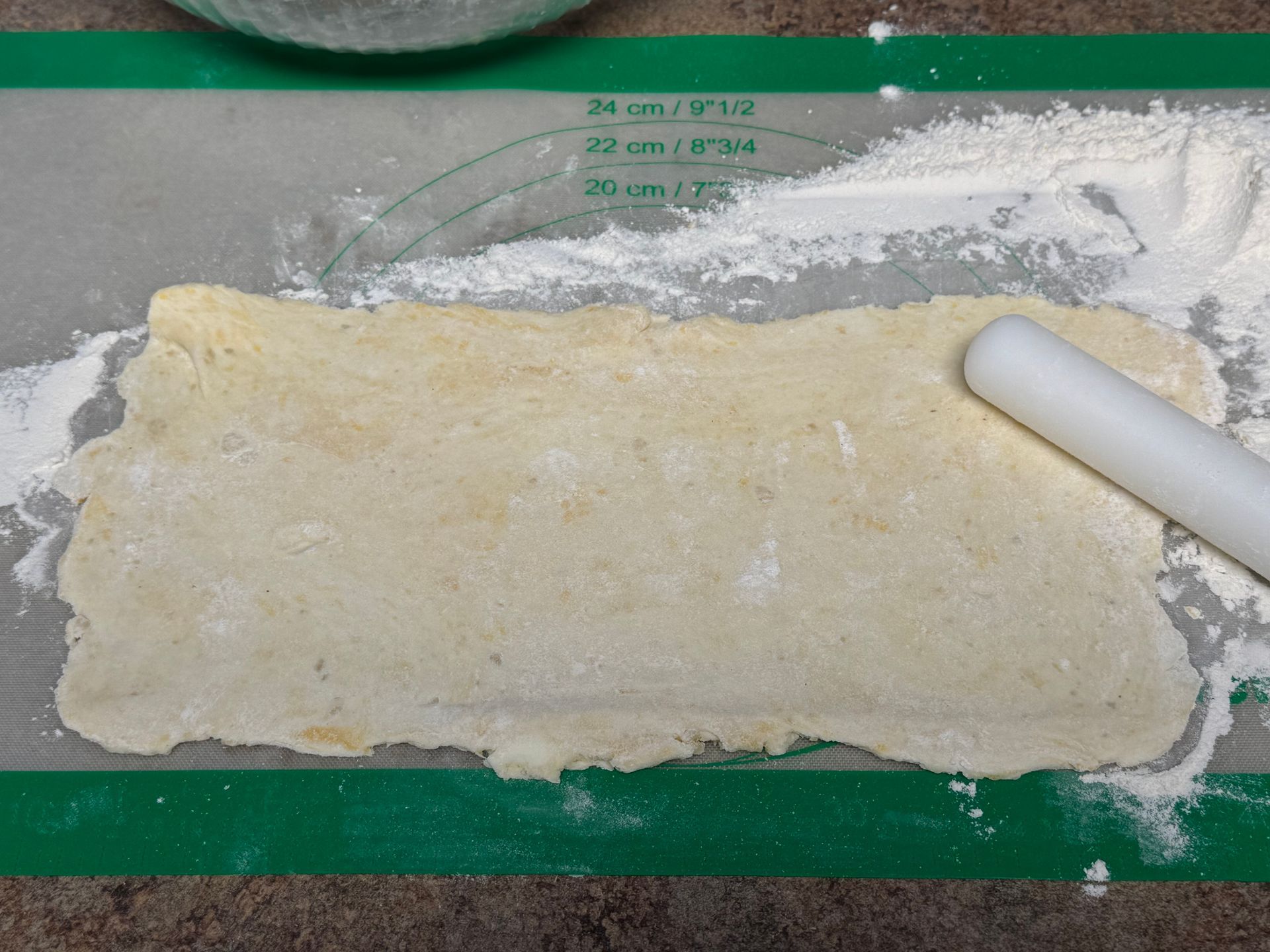
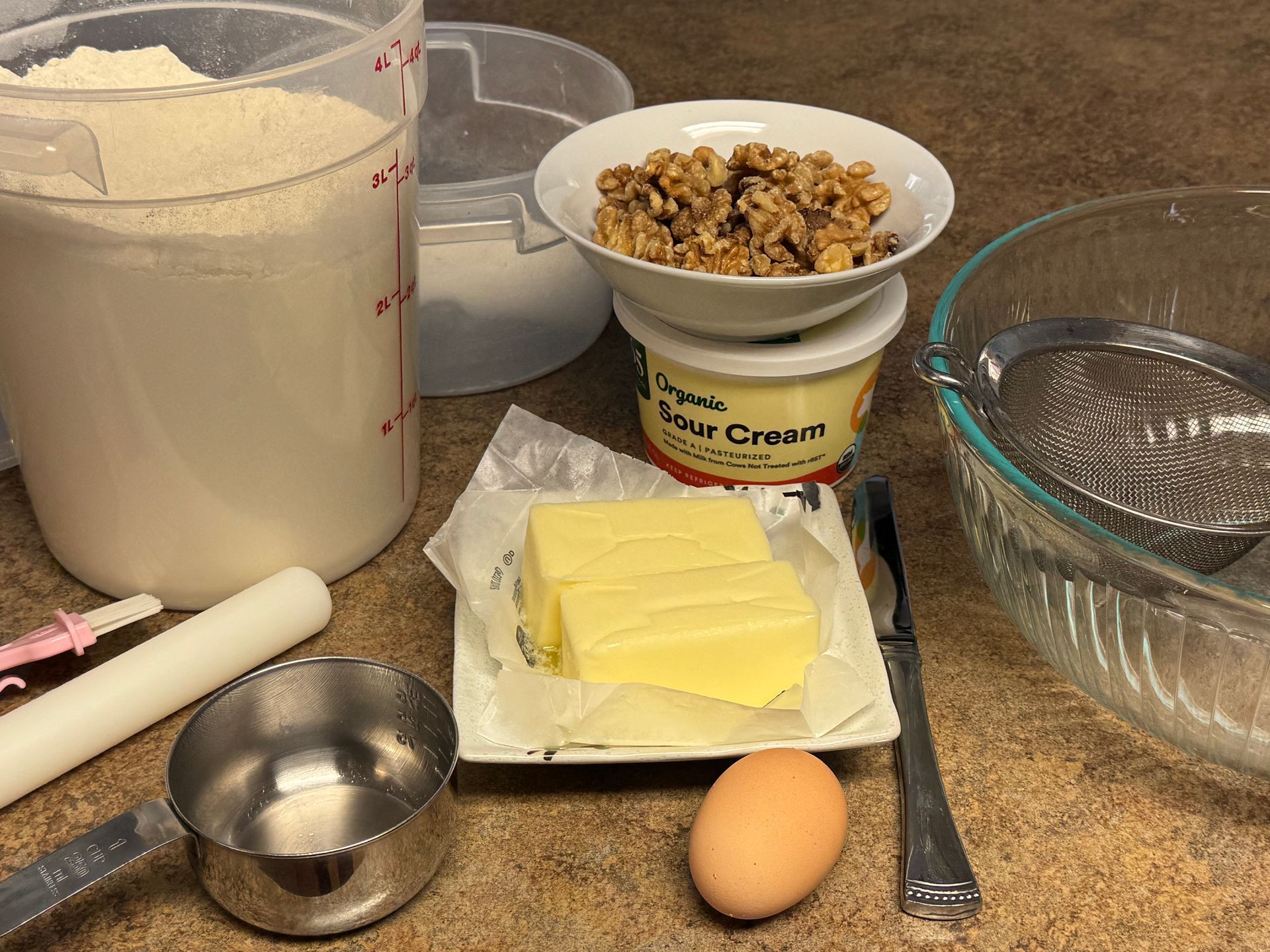
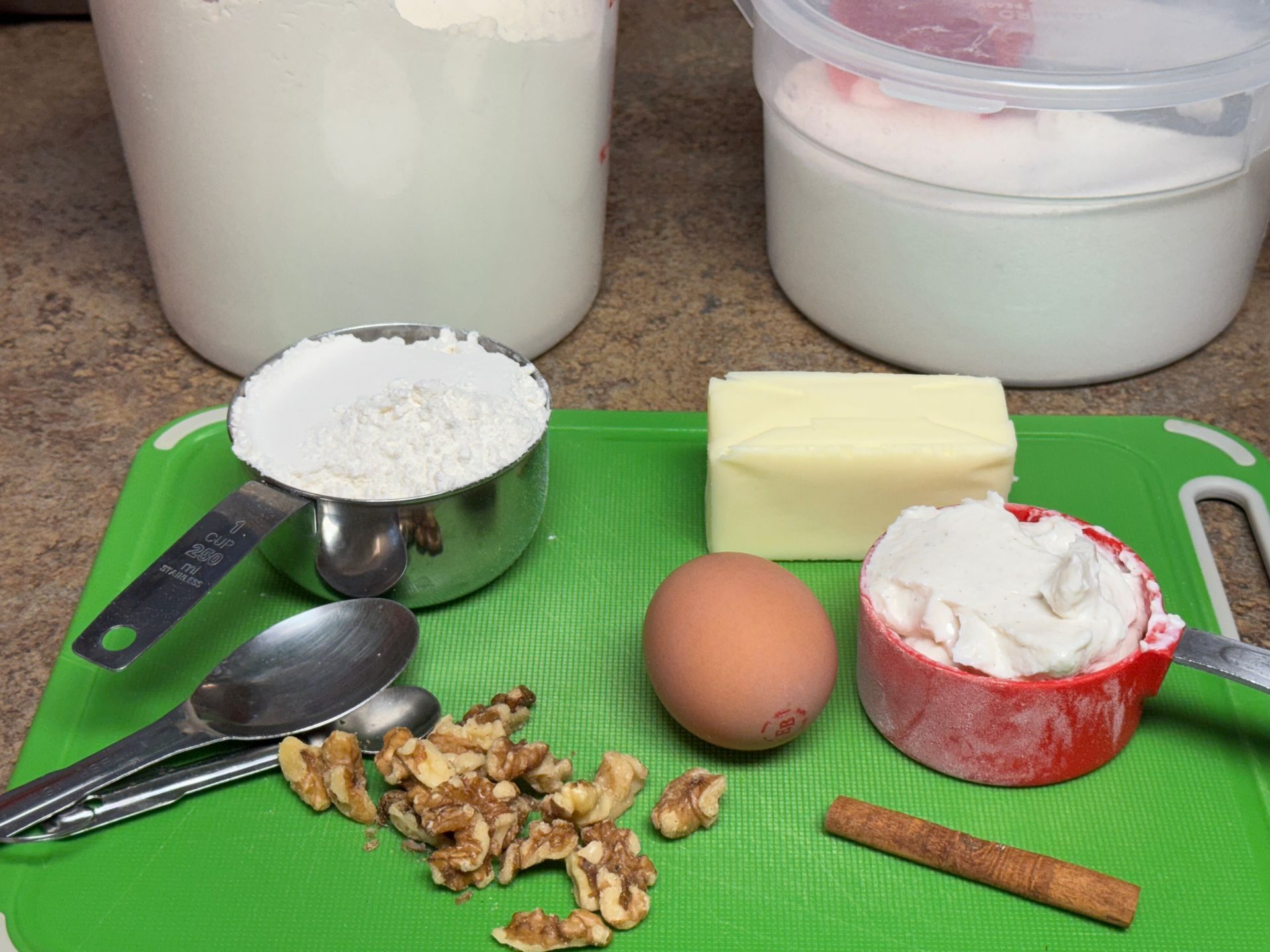
Step 1 Making the butterhorn dough
Place the butter, flour and sour cream into the mixing bowl. Using the paddle, blend to a coarse mixture. It will resemble a pie dough, it's important to keep the dough cold but the butter should be very small.
Add the egg yolk, incorporate gently to avoid developing gluten (a chewy dough). Let the dough rest, covered for 30 minutes.
Step 2 Rolling out and cutting
Roll the dough into 4 even balls. Flatten with a rolling pin into a disk and let rest for 10 minutes. If the kitchen is warm, place in the refrigerator for 10 minutes.
To toast walnuts, place onto a sheet pan, toast and then place into a clean towel. Rub vigorously to loosen the skins. Separate the nuts away from the skin; discard the skin.
While the dough is resting, mix the chopped, toasted walnuts, cinnamon and sugar together in a bowl, reserve.
There are several ways to roll and cut the triangles:
Roll the disk to a 1/8th inch thick circle or 3 inch by 8 inch rectangle; cut into 8 wedges like cutting a pizza pie. You'll need to keep the surface lightly floured to avoid sticking and be sure the dough is cool.
It's not a problem if the edges are a little uneven, when you roll inwards the edges are no longer seen.
When the disks are cut, sprinkle with the sugar-walnut blend.
Roll the disks firmly from the wider, outside of the circle, into the center, making a croissant shape.

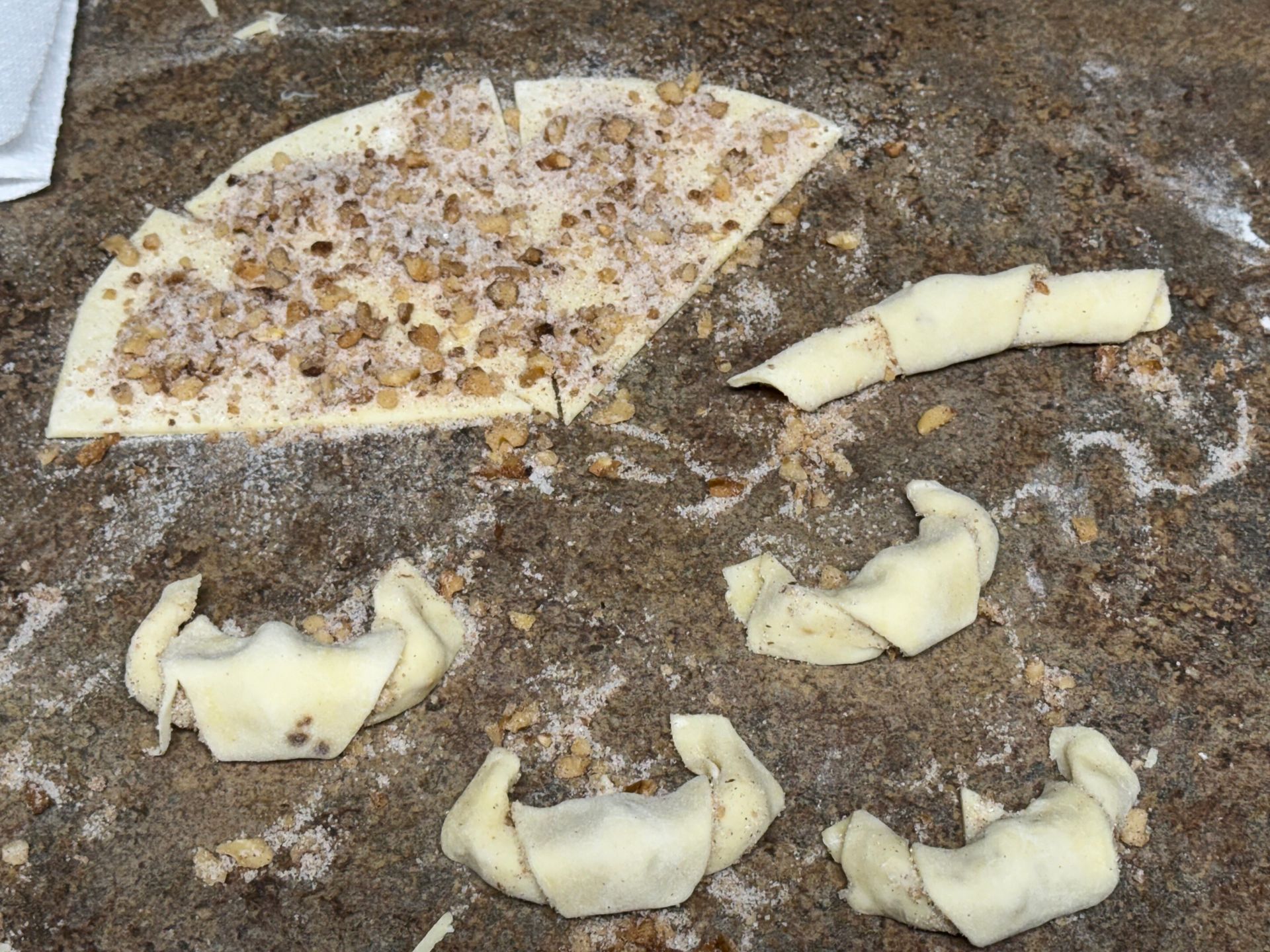
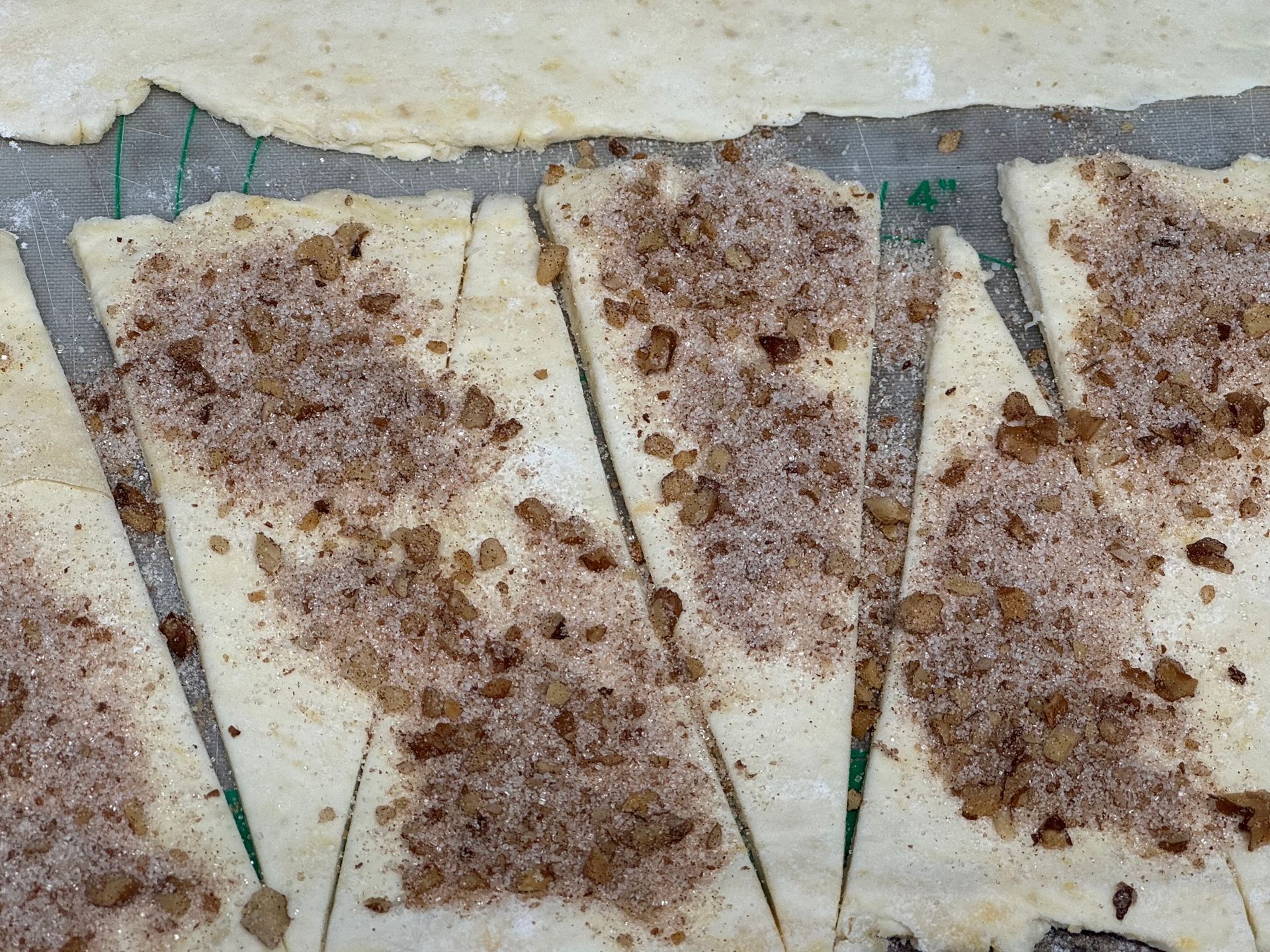
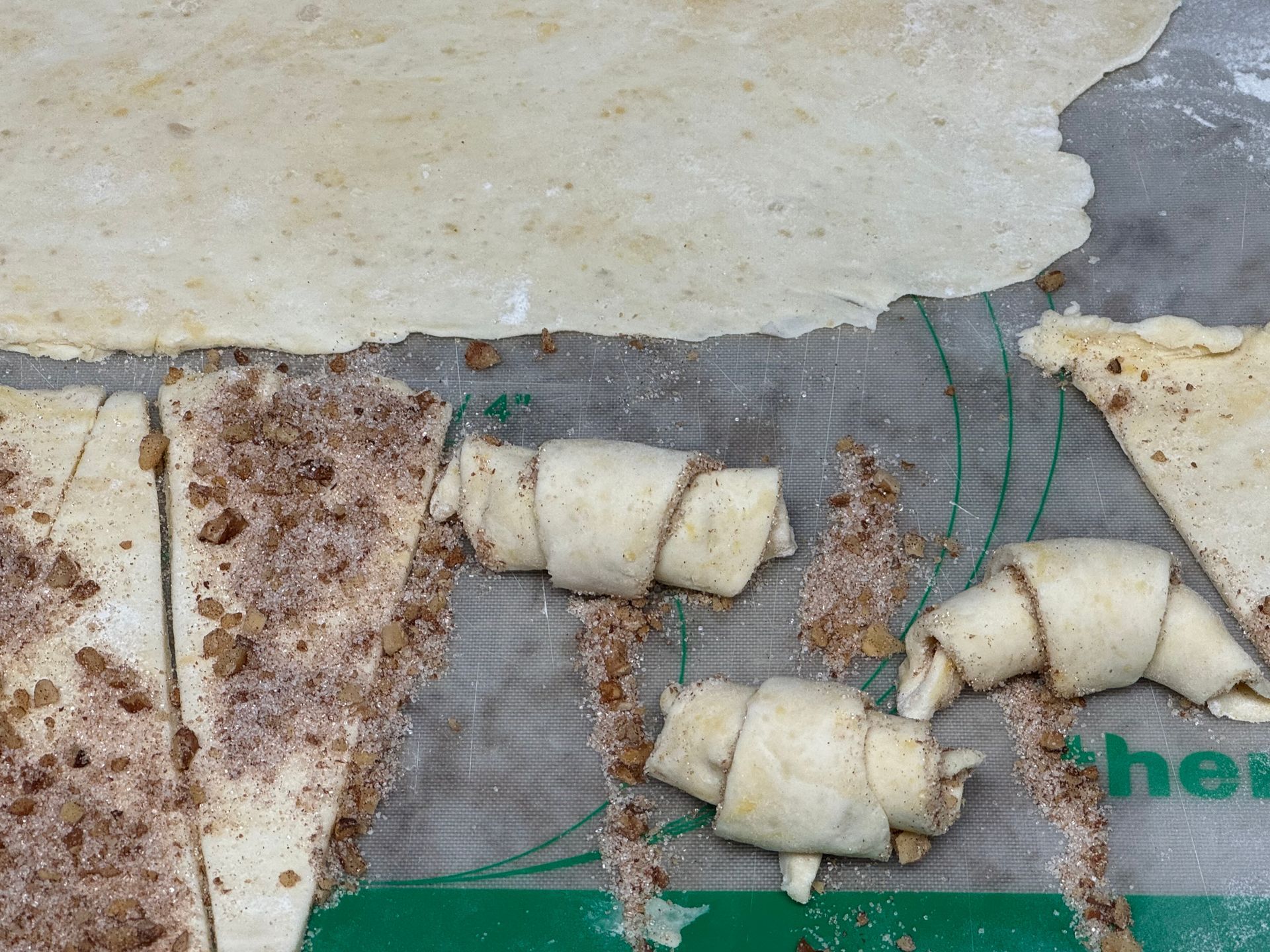


Step 3 Baking
Curl slightly and place on a sheet pan with parchment. Sprinkle with remaining cinnamon, walnut sugar.
note: I like to double the sheet trays to help avoid the bottom of the butterhorn cookies from getting too brown.
Bake at 350° F for about 20 minutes until nicely browned and tender.
Enjoy
